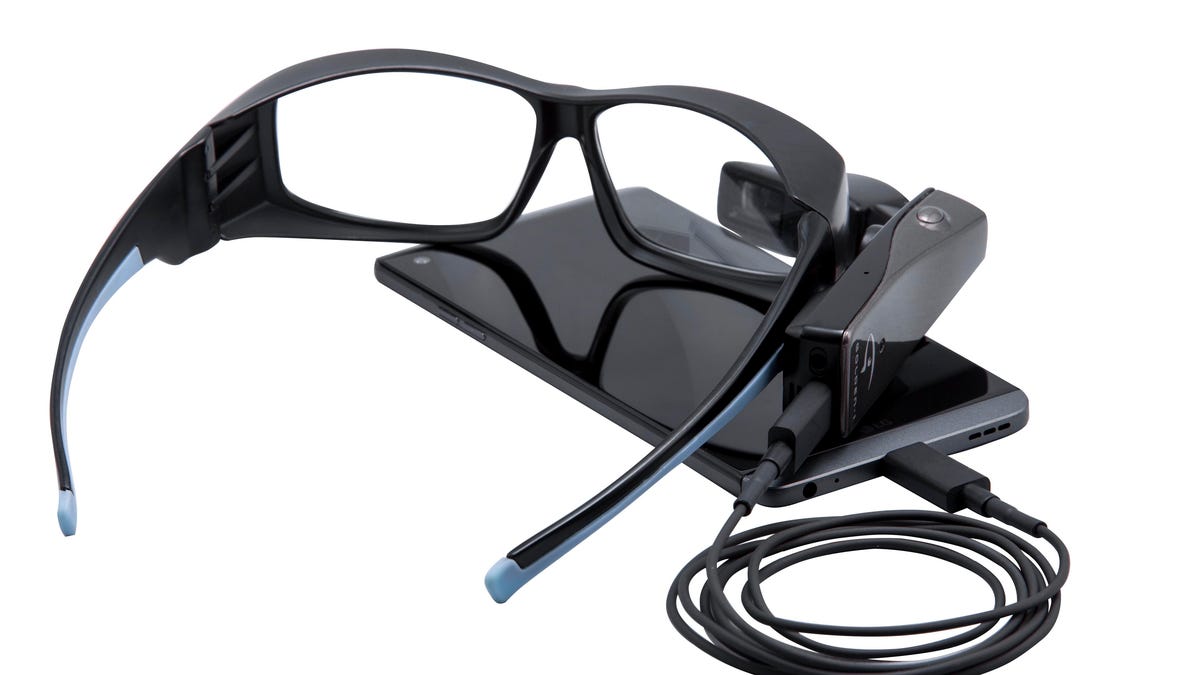This tiny voice-controlled AR headset runs off your phone
Kopin's Golden-i Infinity is like a mini USB-C Google Glass for enterprise.

The clip-on Golden-i display doesn't need the glasses frame. It plugs into a phone over USB-C.
Is it better to have a self-contained pair of smart glasses, or something that simply uses your phone to do the heavy lifting and battery power? Kopin, a manufacturer of microdisplays and smart glasses components, is betting on the latter.
The Kopin Golden-i Infinity isn't really an AR device, so much as it is a smart screen that plugs into an Android or Windows device. Using a USB-C cable, it runs power and can connect to apps. And the whole things works with voice control, or taking your phone out and using apps directly.
Arriving by the third quarter of this year, the $899 (roughly £675 or AU$1,600) device weighs 1.5 ounces, which is really light for any sort of smart glasses product. It clips magnetically onto glasses, visors or wherever else. It's similar in spirit to Toshiba and Vuzix' workplace AR headset running Windows 10 , but that rig needed its own ruggedized mini PC. The Golden-i Infinity just connects to whatever you have, and uses the phone for storage, battery, apps and even touch controls.
It's basically just a voice-controlled little plug-in second screen. The 854x480 resolution microdisplay has a 20-degree field of view and voice-controlled zoom, and can work at up to 2,000 nits for outdoor use. An embedded 13-megapixel camera, microphones and speaker can turn it into a videoconferencing device using Zoom. It could also be used for any phone, tablet or PC voice assistant it's plugged into (Alexa, Cortana Google Assistant, Baidu, but not Siri , since this is Android and Windows 10-connected only.) The headset will work with Android phones running Snapdragon 820 and 835 phones, and eventually 845 too.
Considering how capable USB-C is at handling audio, video and charging, it would make sense for more AR or VR devices to connect this way. Sure, this isn't designed for everyday people outside industrial or enterprise environments. But it's an interesting alternative idea to Qualcomm's proposal for more efficient standalone smart glasses chips.

